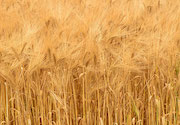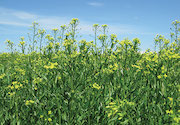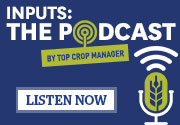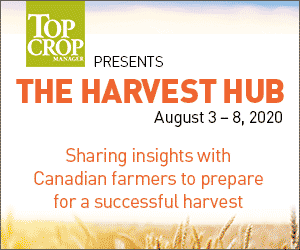| |
| |
 |
 |
| |
 |
|
@{mv_date_MMM d, yyyy}@ |
|
| |
 The first half of July brought high winds, heavy rains and hailstorms to several parts of the Prairies. This left many fields flooded and delayed haying for some, but most crops are still in great condition.
» Read more...
The first half of July brought high winds, heavy rains and hailstorms to several parts of the Prairies. This left many fields flooded and delayed haying for some, but most crops are still in great condition.
» Read more...
A new $3-million cost-shared Canadian Agricultural Partnership program to support projects that will help agricultural processors mitigate the spread of COVID-19 was announced on Monday.
» Read more...
Construction will begin immediately on the new high-throughput grain terminal, which will have a storage capacity of 34,000 metric tonnes, and be able to load up to 134 railcars through a loop track.
» Read more...
|
| |
 |
 |
| |
|
| |
 In Canada, six-row barleys are grown for feed and/or forage, while most two-row barleys are grown for malting. Some question the need to breed barley specifically for feed/forage or to breed six-row barleys at all. Six-row barley research at Alberta Agriculture and Forestry’s Field Crop Development Centre shows the benefits of breeding for this niche market.
» Learn more
In Canada, six-row barleys are grown for feed and/or forage, while most two-row barleys are grown for malting. Some question the need to breed barley specifically for feed/forage or to breed six-row barleys at all. Six-row barley research at Alberta Agriculture and Forestry’s Field Crop Development Centre shows the benefits of breeding for this niche market.
» Learn more |
| |
 Also known by the name false flax, camelina has potential across a wide range of applications, and interest in the crop is growing. From farmed fish food, to aviation fuel, to cooking oil, research scientists with the AAFC Saskatoon Research and Development Centre are working in collaboration with other researchers across Canada to breed improved camelina for a variety of purposes.
» Learn more
Also known by the name false flax, camelina has potential across a wide range of applications, and interest in the crop is growing. From farmed fish food, to aviation fuel, to cooking oil, research scientists with the AAFC Saskatoon Research and Development Centre are working in collaboration with other researchers across Canada to breed improved camelina for a variety of purposes.
» Learn more |
| |
|
| |
 Field scouting should happen regularly through the season, and while digital platforms can’t replace boots on the ground, they can be helpful supplementary tools in the scouting toolbox. In this episode of Inputs, the podcast by Top Crop Manager, Lydia Parker, field product specialist with Climate FieldView, shares some of the ways a digital scouting platform can help you through your growing season.
» Learn more
Field scouting should happen regularly through the season, and while digital platforms can’t replace boots on the ground, they can be helpful supplementary tools in the scouting toolbox. In this episode of Inputs, the podcast by Top Crop Manager, Lydia Parker, field product specialist with Climate FieldView, shares some of the ways a digital scouting platform can help you through your growing season.
» Learn more |
| |
|
| |

The beginning pod/pin bean is the best time to apply fungicide for effective white mould control.
» Read more
The funding will be shared and used to drive automation and digitization of Canada’s agricultural sector.
» Read more
Wheat, lentils and livestock will be the focus of a $24.2-million investment in three University of Saskatchewan-led research projects.
» Read more
|
| |
| |









